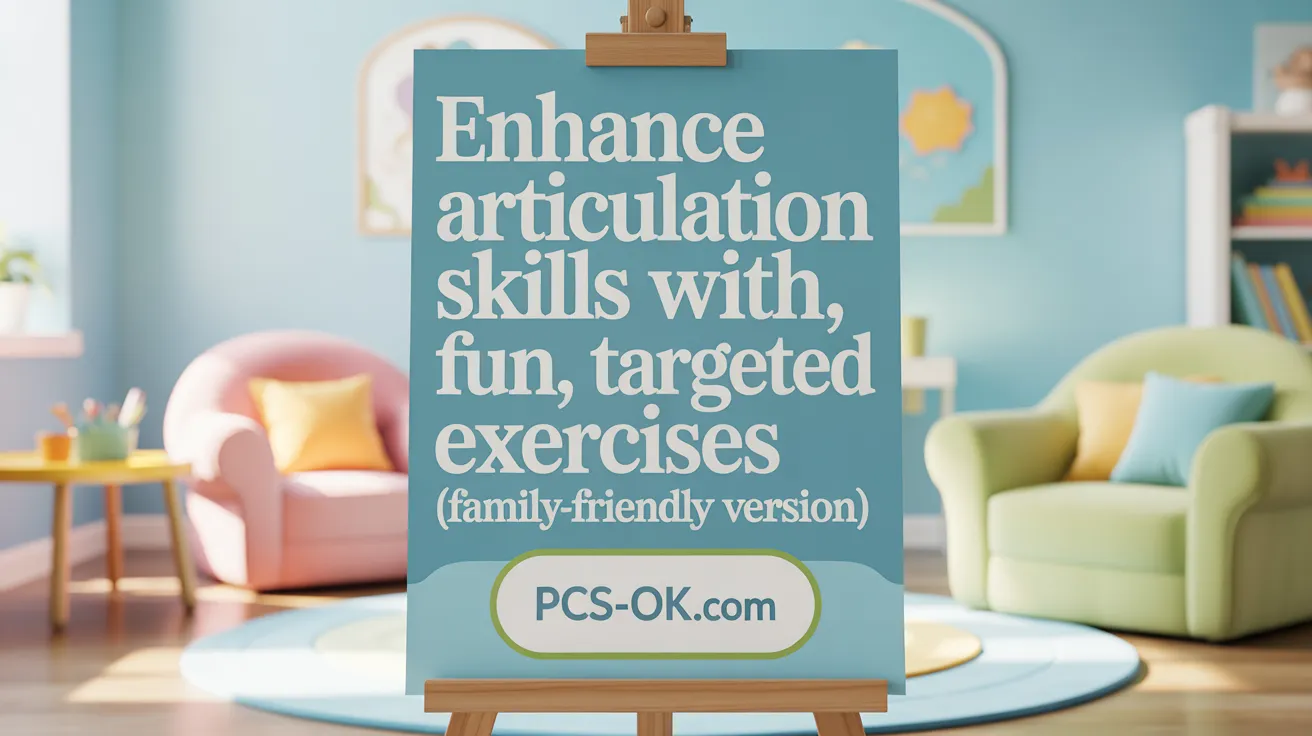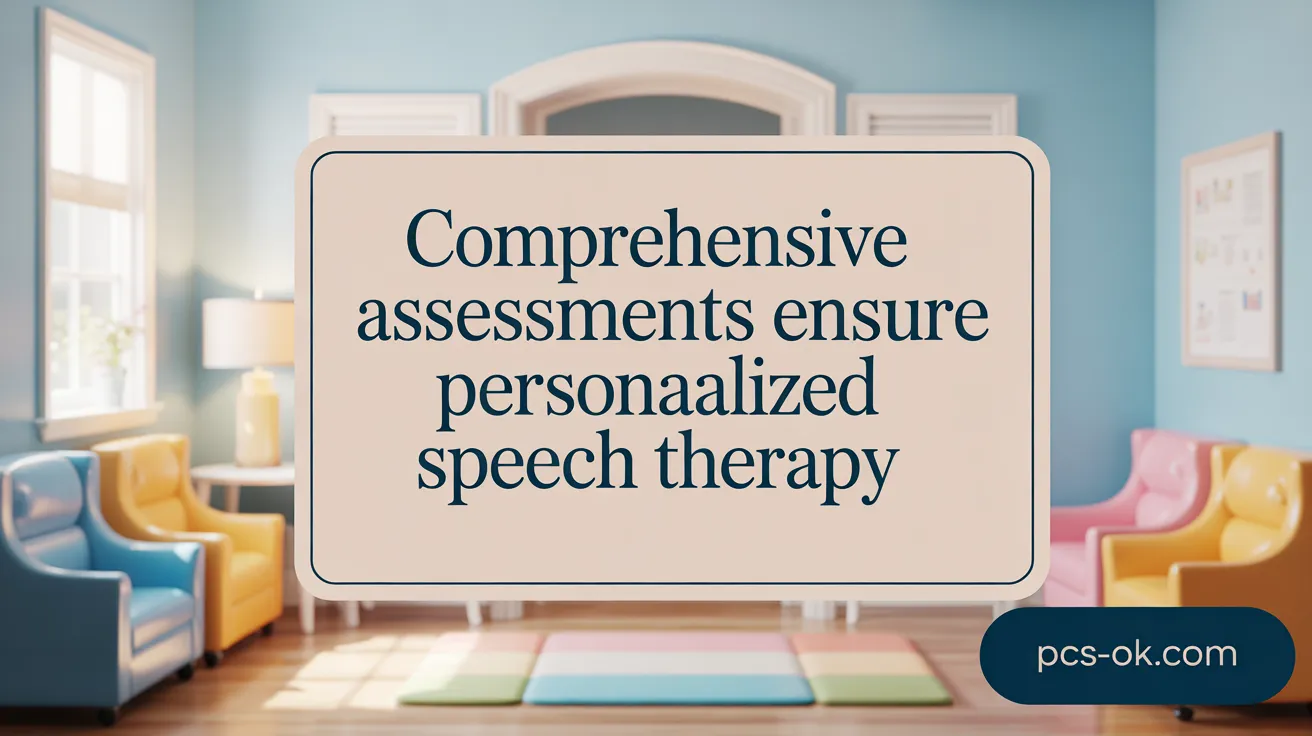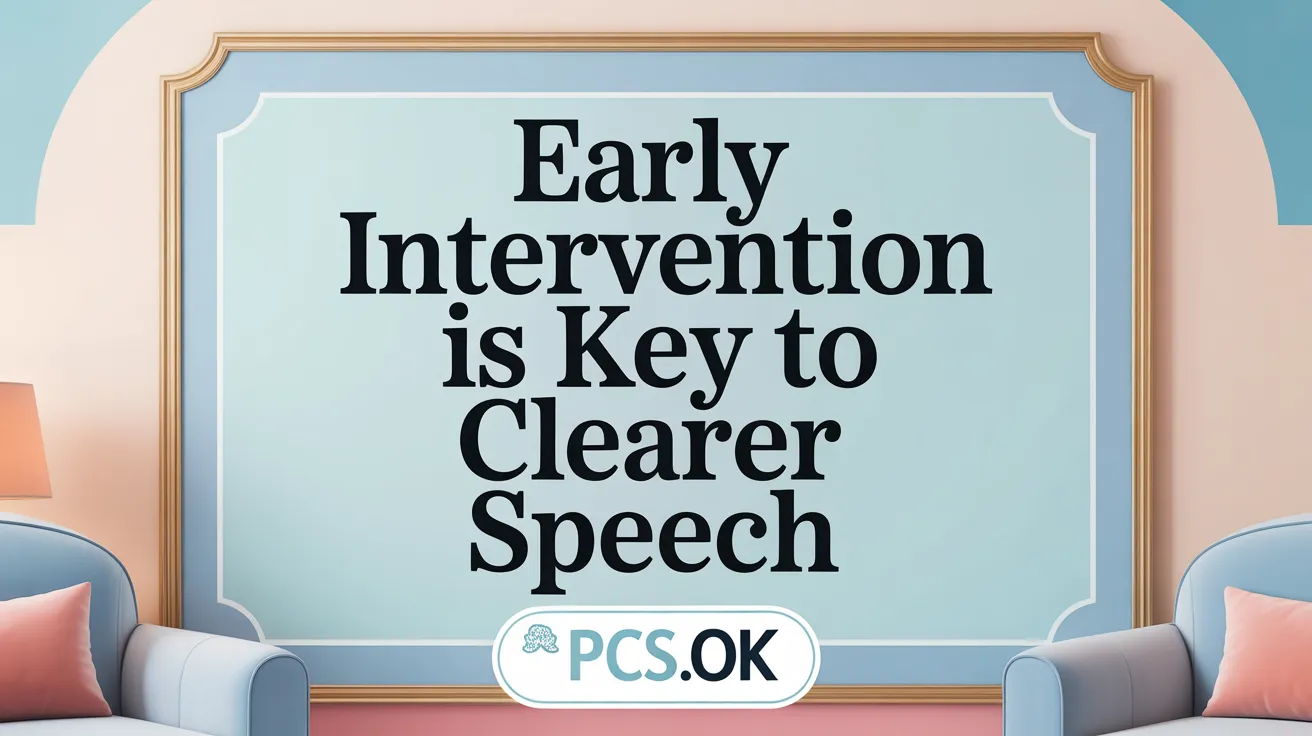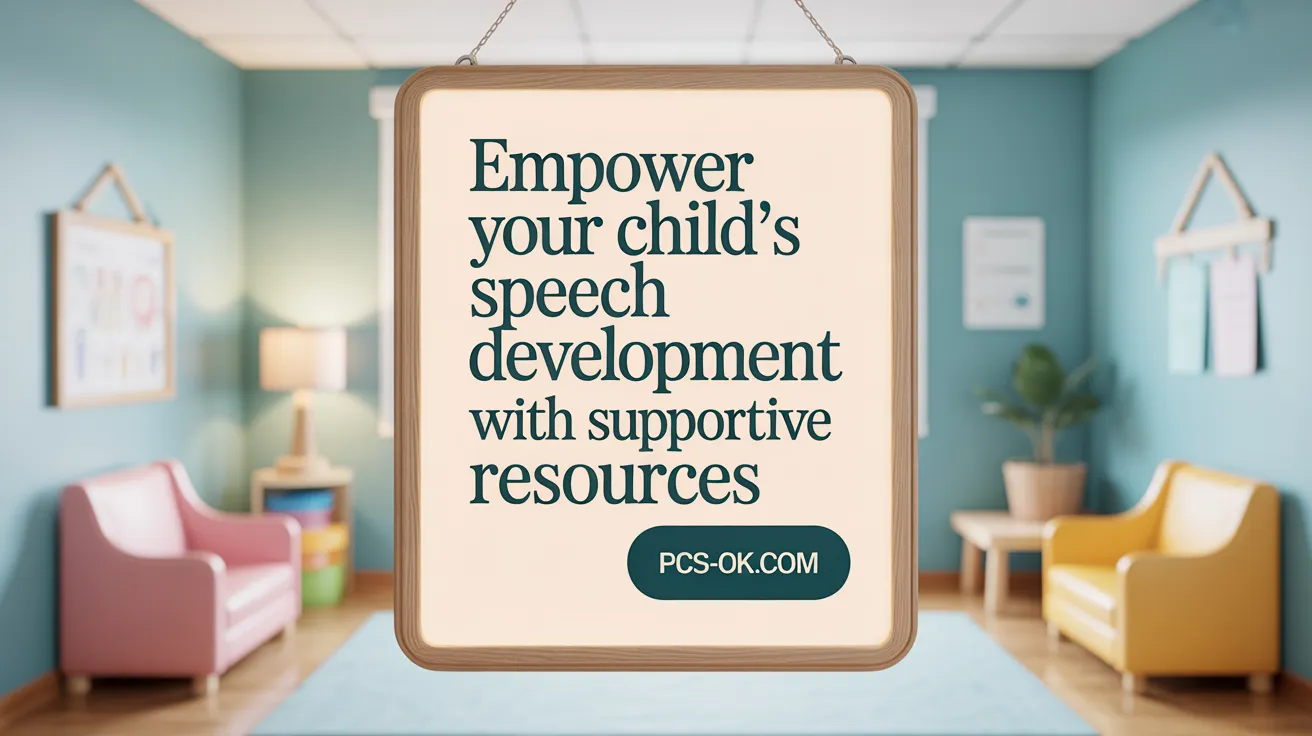Articulation Disorder Treatment Options for Children
Understanding and Addressing Articulation Disorders in Childhood
Articulation disorders in children present unique challenges to speech clarity and communication. These difficulties involve problems producing specific speech sounds, which can impede social interaction and learning. Early recognition, thorough diagnosis, and effective treatment are vital for ensuring children develop clear, confident speech. This article explores the nature of articulation disorders, treatment options, therapy techniques, and ways parents and caregivers can support children’s speech development.
What is an Articulation Disorder in Children? Causes, Symptoms, and Diagnosis
What is an articulation disorder in children, including its causes, symptoms, and methods for diagnosis?
An articulation disorder is a speech sound disorder in which children have trouble correctly producing specific sounds, which can lead to unclear or distorted speech. Unlike issues caused by brain injury, hearing problems, or structural abnormalities, articulation disorders are mainly motor-based, involving the muscles used for speech.
Children with this disorder may substitute, omit, or distort sounds, or add sounds that shouldn’t be there. For example, a child might pronounce “rabbit” as “wabbit” or omit the “s” sound in “sock.” They can also produce syllable errors or inconsistent speech patterns, affecting clarity.
Common causes include developmental delays, oral motor difficulties, hearing loss, structural issues like a cleft palate or dental problems, neurological conditions, or various environmental factors. Sometimes, no specific cause is identified—these cases are called idiopathic disorders.
Symptoms often include difficulty being understood, frustration with speaking, or avoidance of talking. Speech may be noticeably less intelligible than in peers of the same age. Signs such as frequent substitutions, omissions, distortions, or speech that is inconsistent highlight the need for assessment.
Diagnosis requires a thorough evaluation by a speech-language pathologist (SLP). This assessment involves several steps:
- Speech sampling to analyze errors and patterns
- Hearing tests to rule out hearing loss
- Oral motor examinations to assess muscle strength and coordination
- Review of medical and family history to identify contributing factors
Early identification of articulation disorders is crucial. When diagnosed promptly, children can benefit from targeted speech therapy to correct sounds, improve speech clarity, and support overall communication skills. Using specific exercises, practicing sounds at home, and engaging in speech activities can reinforce therapy outcomes.
In summary, articulation disorders involve motor-based errors in speech sound production, caused by various developmental, structural, or neurological factors. Proper diagnosis and early intervention are essential for helping children develop clear, confident speech.
Evidence-Based Treatment Options and Therapy Approaches
What treatment options and therapy approaches are available for children with articulation and speech sound disorders?
Children with articulation and speech sound disorders have access to a variety of personalized speech therapy strategies, which are carefully selected based on individual assessment results. The primary goal of these interventions is to improve clarity of speech, help children produce sounds correctly, and ensure long-term maintenance of speech skills.
One widely used approach is traditional articulation therapy. This method focuses on targeting specific sounds at different levels, starting from isolated sounds, then progressing to words, sentences, and eventually conversations. Techniques include phonetic placement and auditory discrimination exercises, with an emphasis on correct production through repeated practice.
In addition to articulation-specific methods, phonological approaches address broader sound patterns or rules that influence multiple speech errors. Notable therapies in this category include the Cycles Approach, which involves rotating through different error patterns over time; Minimal Pairs therapy, which uses pairs of words differing by one sound to enhance perceptual and production skills; and Maximal and Multiple Oppositions, which contrast sounds or sound patterns to clarify differences.
Another important method is the Stimulability Approach, which focuses on increasing the child’s ability to produce target sounds correctly, especially helpful for children who are less stimulable for certain sounds. The Complexity Approach targets more complex sounds early on with the aim of generalizing correct production to simpler sounds later, often producing more durable results.
Choosing the right therapy depends on detailed assessment results that inform clinicians about the child’s specific errors, strengths, and developmental stage. Goals include establishing proper sound production, ensuring generalization across contexts, and maintaining gains over time.
Enhancing therapy effectiveness involves integrating literacy practices, such as phonemic awareness activities, and respecting cultural and linguistic diversity. This includes adapting assessment and intervention to account for dialects, accents, and bilingual language development.
Extensive research supports these various intervention models, showing that tailored, evidence-based approaches significantly improve speech outcomes in children. Combining these strategies with family involvement and consistent practice creates the best conditions for successful treatment.
Speech Therapy Exercises and Techniques for Articulation Improvement

What types of speech therapy exercises and techniques are used to address articulation issues in children?
Speech therapy for children with articulation problems employs a variety of exercises designed to improve sound production and coordination. One foundational approach involves modeling correct pronunciation of target sounds, giving children clear examples to imitate. Repetition drills are frequently used, where children practice sounds repeatedly in isolation, then within words, phrases, and sentences to build consistency.
Another effective method uses minimal pair contrasts—pairs of words that differ by just one sound, such as “bat” and “pat”—to help children differentiate between similar sounds and produce them accurately. These activities are often complemented by engaging, play-based techniques that make practice enjoyable.
Incorporating visual cues like mirrors or picture cards helps children see how their mouths move, aiding awareness and correct placement. Tactile feedback, such as touching the throat or lips during sound production, provides sensory input to reinforce correct movements.
Auditory cues, like listening to recordings of correct pronunciation, support children in recognizing accurate sounds. Movement activities—for example, blowing bubbles, using straws, or tossing bean bags—can strengthen mouth muscles and improve speech coordination.
Progression from isolated sounds to complex speech is essential. Children start by practicing sounds in isolation, then progress to syllables, words, sentences, and finally, natural conversation. This gradual approach ensures skills are generalized across contexts.
Interactive exercises are tailored to suit each child’s developmental level and specific speech errors. All exercises should be guided by a qualified speech-language pathologist (SLP) to ensure appropriateness and effectiveness.
The use of playful activities, combined with accurate modeling and multi-sensory cues, helps children stay motivated and achieve better articulation over time. Regular practice, both in therapy sessions and at home, supports consistent progress toward clear, confident speech.
How Parents and Caregivers Can Support Speech Development at Home
How can parents and caregivers support children’s speech development and manage articulation difficulties at home?
Supporting a child’s speech development involves creating an environment that naturally encourages language growth. Parents and caregivers can do this by offering a language-rich setting through activities like reading books aloud, singing songs, and narrating daily routines. These practices expose children to correct pronunciation and diverse vocabulary.
Modeling clear speech is essential. When adults speak slowly and clearly, children learn to imitate proper articulation. Positive reinforcement, such as praise or friendly encouragement, motivates children to practice sounds and reduces frustration.
Engaging children in play is a fun way to improve speech. Using toys, pictures, or everyday household items to label objects helps children practice sounds in context. Having conversations during play, describing actions, and asking questions foster natural interaction and speech use.
It’s also highly beneficial to work with speech-language pathologists (SLPs). They can provide customized exercises, advice on techniques, and guidance tailored to a child’s specific needs. Following their recommendations ensures that practice routines at home are effective.
Incorporating specific home exercises can solidify progress made during therapy. These might include word lists, articulation flashcards, or targeted activities like practicing sounds within words and sentences.
Patience and consistency are crucial. Speech development varies among children, and steady, encouraging support helps build confidence. Regular practice, even in short daily sessions, can lead to significant improvements over time.
Lastly, early consultation with communication experts benefits children experiencing persistent speech challenges. Prompt intervention can prevent long-term issues, support social participation, and boost academic success.
By fostering a supportive, engaging, and consistent environment, parents and caregivers play a vital role in helping children overcome articulation difficulties and develop clear, confident speech.
Assessment and Factors Influencing Treatment Decisions

What components constitute a speech assessment conducted by speech-language pathologists (SLPs)?
A comprehensive speech assessment involves multiple steps to evaluate a child’s speech sound production and overall communication skills. It begins with screening to identify potential issues, followed by an in-depth evaluation of speech sounds, connected speech, and speech development history. The assessment includes analysis of errors, severity, intelligibility, stimulability (ability to produce sounds correctly with prompts), and perception of speech errors. An oral mechanism exam checks the physical structures involved in speech, such as lips, tongue, and palate, while hearing tests rule out hearing loss as an underlying cause. Language evaluation is also performed to understand how speech errors may relate to broader language skills.
How do cultural and linguistic diversity affect assessment and therapy planning?
Considering cultural and linguistic backgrounds is essential for effective evaluation and intervention. SLPs conduct culturally responsive assessments by understanding dialectal variations and accents that may influence speech patterns. They collaborate with interpreters when necessary and tailor evaluation tools to respect individual diversity. This approach ensures that speech errors are distinguished from dialectal differences and that therapy strategies are relevant to the child’s linguistic context.
How do severity, stimulability, and developmental level influence therapy planning?
The severity of a child’s speech errors helps determine the intensity and focus of therapy. Children with less severe, more stimulable errors (sounds that they can produce with prompts) may progress faster and require shorter interventions. The developmental level guides target selection, with goals aligning to what is typical for their age or developmental stage. Therapy plans are customized to match the child’s abilities, ensuring that interventions are engaging and achievable to promote success.
Which therapy settings and collaboration strategies are most effective?
Therapy can be delivered in various settings — at home, in school, or in clinical environments. Choosing the right setting depends on the child’s needs and opportunities for communication practice. Collaboration with families and educators is crucial to extend learning beyond therapy sessions. SLPs often work closely with parents and teachers, providing guidance on activities and daily routines that support speech development.
Why is monitoring progress and adapting approaches important?
Regular monitoring allows SLPs to track changes in speech accuracy and overall communication skills. If initial strategies do not yield expected improvements, approaches are adjusted to better suit the child’s evolving needs. This ongoing adaptation ensures that therapy remains effective, engaging, and tailored to facilitate meaningful progress.
How do policies and guidelines shape the scope of therapy?
Professional policies and clinical guidelines influence how speech therapy is delivered, defining the scope, duration, and focus of interventions. They promote evidence-based practices and ensure ethical standards are maintained. Informed by national and local health policies, therapy plans are structured to maximize benefits within available resources and timeframes, ensuring access and quality of care for children with articulation disorders.
Intervention Strategies Tailored to Articulation and Phonological Disorders
What intervention strategies are tailored specifically for children’s articulation and phonological disorders?
Interventions for children with speech sound disorders focus on correcting specific errors in sound production and improving overall speech clarity. Speech-language pathologists (SLPs) customize therapy based on detailed assessments that identify the child’s unique error patterns, severity, and developmental stage.
For articulation disorders, therapy often emphasizes motor-based techniques. These include phonetic placement exercises, modeling the correct positioning of lips, tongue, and other speech muscles, and practicing sounds in isolation, syllables, and words. The goal is to help children produce sounds accurately by reinforcing proper articulation movements.
Phonological disorders, on the other hand, involve more language-based errors, such as patterns of sound simplification or substitution. Here, approaches like minimal pairs, multiple oppositions, and core vocabulary therapy are effective. These techniques contrast correct and incorrect sound patterns or focus on improving consistent use of correct sounds across different contexts.
Use of minimal pairs, multiple oppositions, and core vocabulary therapy
- Minimal pairs therapy: Uses pairs of words that differ by only one sound (e.g.,
The Importance of Early Diagnosis and Consistent Therapy

Typical speech sound development milestones
Most children develop the ability to produce all speech sounds by age 4 or 5. By this age, their speech should be understandable to most listeners. Before this, children go through stages of cooing and babbling, gradually acquiring specific sounds through the natural process of speech development. By age 3, children are expected to be approximately 80% understandable, and by age 4, almost all speech should be clear. These milestones serve as benchmarks to help identify when speech development is on track.
Risks of delayed identification
When speech sound issues are not identified early, they can lead to long-term communication difficulties. Children with untreated articulation problems may experience frustration, social embarrassment, or avoidance of speaking situations. Delays in recognizing these issues may also impact academic performance and social interactions, potentially affecting self-esteem and peer relationships.
Benefits of early, targeted speech therapy
Early diagnosis allows for timely intervention, which can significantly improve speech clarity. Speech therapy helps children learn correct sound production, strengthen the muscles involved in speech, and develop the motor coordination needed for clear articulation. Interventions are tailored to each child’s specific errors and developmental level, leading to faster progress and more successful outcomes.
Preventing long-term social and academic difficulties
Addressing articulation problems early can prevent the development of more complex language issues later on. Clear speech supports effective communication, boosting confidence and social participation. This foundation is crucial for academic success, as expressive language skills are essential across learning environments. Early treatment also reduces the likelihood of persistence into school age, which could require more intensive interventions.
Role of family and educational systems in supporting progress
Families play a vital role by practicing speech exercises at home and providing encouragement. Teachers and school staff can support children by creating inclusive environments and collaborating with speech-language pathologists. Consistent reinforcement of therapy goals in various settings helps generalize skills into everyday conversation.
Evidence showing effective improvement with timely intervention
Research shows that children receiving early and targeted speech therapy demonstrate significant improvement in speech clarity within months to a few years. Techniques such as phonetic placement, auditory discrimination, and naturalistic speech interventions are supported by a strong evidence base. Overall, timely intervention enhances communication skills, academic achievement, and social integration.
Resources and Tools for Effective Articulation Therapy

When treating children with articulation disorders, a variety of evidence-based resources and interventions are available to support effective therapy. Assessment tools form the foundation of diagnosis and treatment planning. Instruments such as the HAPP-3 (Hodson Assessment of Phonological Patterns, Third Edition), DEAP (Diagnostic Evaluation of Articulation and Phonology), and KLPA-3 (Khan-Lewis Phonological Analysis, Third Edition) help clinicians evaluate speech sound production, detect errors, and identify patterns.
For home practice and reinforcement, mobile applications and digital resources are increasingly popular. These tools offer interactive exercises and engaging activities that help children practice target sounds in a fun and accessible way. Complementing digital tools, instructional materials like flashcards, picture cards, and sentence strips are widely used by speech-language pathologists to target specific sounds, encourage repetition, and build confidence.
Emerging methods such as telepractice extend therapy options beyond traditional in-person sessions. Teletherapy allows children to receive expert intervention remotely, which is especially useful for those in rural or underserved areas, bilingual children, or during circumstances limiting face-to-face contact.
Addressing the social-emotional aspects of speech development is also crucial. Incorporating assessments of social skills and emotional well-being helps create a comprehensive treatment plan that supports confidence and social participation.
To ensure culturally responsive therapy, clinicians incorporate individualized and subpopulation-specific resources, respecting dialects, accents, and linguistic diversity. Collaborative efforts between clinicians, families, and educators foster a supportive environment where strategies can be tailored to each child’s needs.
In summary, effective intervention relies on a combination of validated assessment tools, digital and printed practice materials, innovative delivery methods like telepractice, and collaboration. These resources, grounded in research, help children improve articulation skills, supporting their communication and social integration.
| Resource Type | Examples | Purpose | Effectiveness Evidence |
|---|---|---|---|
| Assessment Tools | HAPP-3, DEAP, KLPA-3 | Diagnose and plan therapy | Supported by clinical research |
| Digital Resources | Mobile apps targeting speech sounds | Home practice reinforcement | Proven to increase engagement |
| Instructional Materials | Flashcards, sentence strips | Targeted sound practice | Widely recommended by clinicians |
| Delivery Methods | Telepractice | Remote therapy | Supportive evidence, especially for diverse populations |
| Cultural & Emotional Resources | Social-emotional assessments | Holistic intervention approach | Enhances confidence and social skills |
Access to such a broad array of scientifically supported tools and resources enhances the efficacy of speech therapy for children with articulation issues, leading to better communication outcomes and improved quality of life.
Moving Forward with Informed and Supportive Treatment
Managing articulation disorders in children requires a multifaceted approach combining early diagnosis, specialized speech therapy, and active family involvement. By understanding the nature of articulation difficulties and employing evidence-based interventions tailored to each child’s unique needs, significant improvements in speech clarity and confidence can be achieved. Parents, caregivers, and professionals working together create the best environment for children to overcome articulation challenges and thrive in communication throughout their lives.
References
- Articulation Disorder: What It Is, Types & Treatment
- Speech Sound Disorders: Articulation and Phonology
- Articulation Disorder: Speech Therapy Exercises for Kids at …
- The Ultimate Articulation Therapy Guide
- A Comprehensive Guide to Articulation Disorders in Children
- Articulation Disorders: Causes, Symptoms & Treatment
- Treatment approaches for speech sound disorders
- Speech Sound (Articulation) Disorders – Together by St. Jude™
